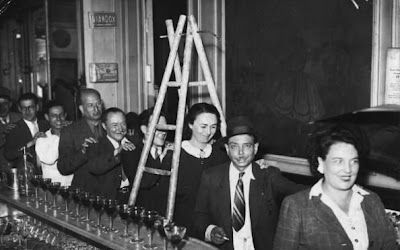


Ever wonder if your artwork is just an accident waiting to happen? Lucky you!
Much of what sparkles in a successful piece is what artist's consider "happy accidents". I am certain that I don't know how to teach the making of happy accidents. Walk under a ladder? Cross paths with a black cat?
Let's approach this in an experiential way. A "just let it happen" sort of methodology.
- When you are rendering your next work, try choosing that next color randomly. Choose a specific value, but let the hue be an accident. Forget about "local color" completely. The way it works for me is that my values are part of my palette's structure. Look at my header at the top of the page - the mid values are those in the middle of the tray as one looks from left to right, jumping the dividers as you go.
- If that is too scary (you scardy cat) then try this: make an abstract thumbnail with randomly chosen hues. Use this as your palette for your next work. You may change values, but these are your limited hues.
- Stand at your easel and use your whole body when making your marks. The extra pizazz in your marks should become evident. You are loose at the waist, and your work is at shoulder level. Give it a try!
- An oldie but a goodie: make an underwash on white paper by using the side of a hard pastel to indicate the color, and then wash that with turpenoid and a brush. Let the underlayer show through.
- Counter-intuitive one here. Tape your paper on your big drawing board all around and secure. Make sure it is squared, and justified to the edge of the board. Your senses will be less distracted by the sloppy or uneven paper that sometimes gets mounted.
Now, go forth and be uncareful.

I ain't no scardy cat!
ReplyDeleteGood advice Casey.
If I understand your last point, what I do is to clip an old matt over the top of the paper and work within it's confines to help me concentrate on the image I'm trying to make. Works for me!
The hat trick is a good one. Recently, I have been using white tape to isolate the image after I finish it. Provides the same "frame".
ReplyDeleteI actually got this last tip from reading a Albert Handell book. He basically reminds us to have a neat and straight piece of paper, with breathing room around it on the drawing board.
I meant "the mat trick..."
ReplyDeleteThese are great suggestions!
ReplyDeleteThanks for reading, Ann.
ReplyDelete